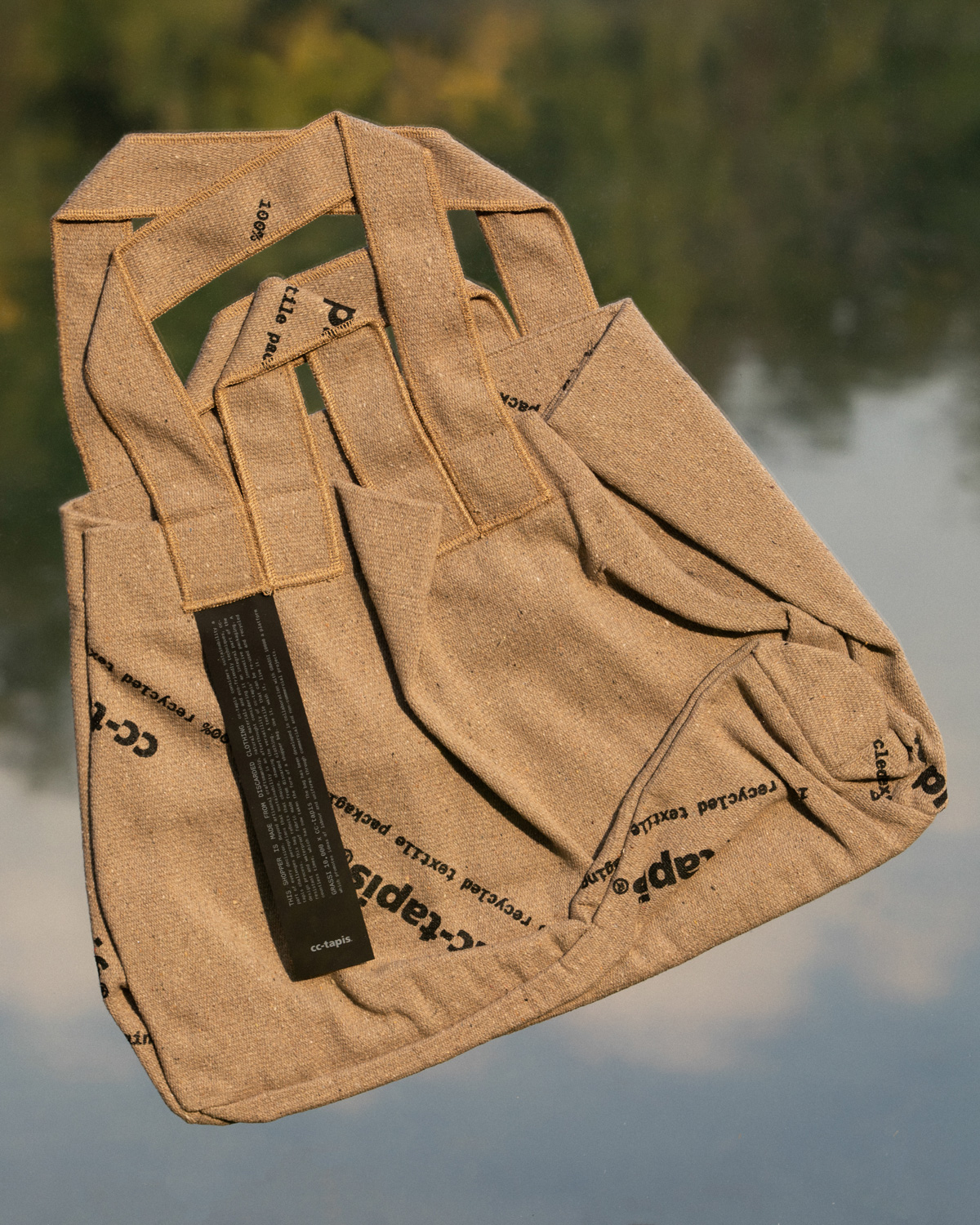
The sustainable promise of cc-tapis continues with the launch of a useful and practical bag made with recycled textile, in collaboration with Grassi 10000.
THE SHOPPER

Guided by the desire to be sustainable in every aspect of the company, in 2021 cc-tapis expanded its larger sustainability commitments by giving a second life to discarded clothing and transforming them into a recycled textile. A fabric that became the company’s plastic free packaging transporting cc-tapis rugs all over the globe.
From discarded clothing to rug packaging, the versatile textile now takes the shape of a functional and multipurpose shopper. An idea born from the collaboration between cc-tapis and Grassi 10.000, a platform which promotes ideas of labor and uniforms through commercial and non-commercial projects.

In addition to giving a third life to discarded clothing, in the hands of customers the shopper can be easily replicated following the paper patterns of the design available on the cc-tapis website.
Download the paper pattern of the shopping bag HERE
THE CAMPAIGN

To launch this initiative, cc-tapis organized a photoshoot at C.A.M.M. Milan, a meeting point for trucking companies for over 60 years.
The symbolic encounter between a textile created as packaging and a location which is a meeting point for overland transportation, was the perfect scenario to photograph the new shopping bag in a dynamic sequence of pictures by Teo Poggi for cc-tapis.
GRASSI 10000
GRASSI 10000 is a Milanese company founded by young designer Anna Grassi and driven by a strong sensitivity for creative recycling and sustainability applied to textile products.
Based on the three pillars of creative recycling, sustainability and quality, GRASSI 10000 was born as a brand inspired by the world of uniforms to create timeless garments, offering itself as an alternative to the fast fashion trend.
With the intention of not only carrying out commercial clothing projects, GRASSI 10.000 is also focused on new production research, promoting ideas in accordance with the circular economy.

Photo by Teo Poggi